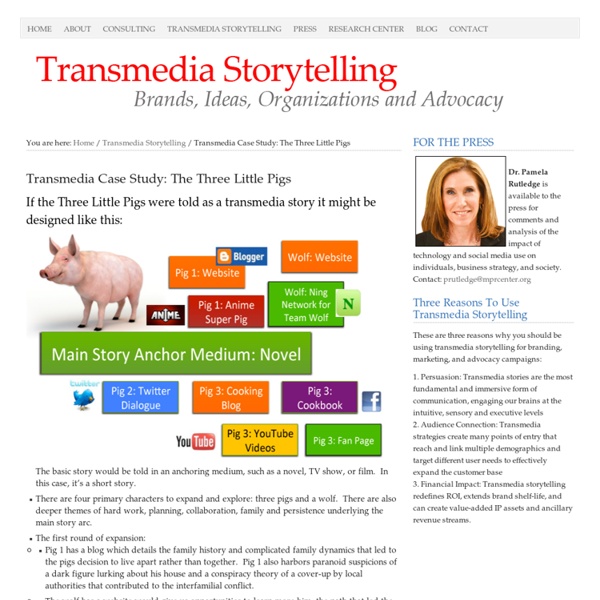Transmedia Case Study: The Three Little Pigs

Transmedia in the Classroom
Transmedia and Education: How Transmedia Is Changing the Way We Learn
For one language arts class project, a middle school teacher in Shelburne, Virginia, Chad Sansing, asks his sixth graders to read Peter Cherches’s 1986 poem “Lift Your Right Arm,” and then translate it into computer code. The poem occurs in action sequences—for example, “Lift your right arm, she said./I lifted my right arm.” Sansing and his class conceive a list of actions, sketch ideas of how to code them, using icons or letters, and then code the poem. In doing so, the students become producers of both a new language and way of seeing poetry. Sansing’s students have also translated the poem’s code into Scratch, to create animation, and into LEGO Mindstorms EV3, a robot-programming language. What is the point of this activity? Transmedia, a broad descriptive word that literally translated means “across media” and encompasses many strategies that transverse industries, is generally regarded as the use of multiple media platforms to tell a story or story experience.
Related:
Related:



